A U.K. Couple Found a Literal Hoard of Rare Gold Coins Buried Under Their Kitchen Floor During Home Renovations
What’s hidden beneath your floorboards? For one anonymous U.K. couple, it was a trove of 264 gold coins that is now set to sell at auction for as much as £250,000 ($288,000).
For generations, the treasure lay hidden underneath an 18th-century townhouse in Ellerby, a village in North Yorkshire. Then, in 2019, the homeowners of 10 years redid their kitchen floor, and hit what they thought was an electrical cable beneath the concrete.
Instead, it was the secret hoard, tightly packed inside a salt-glazed earthenware cup, about the size of a soda can, buried beneath the home, ITV News reported.
“It was an entirely serendipitous discovery,” Gregory Edmund, of London auctioneers Spink and Son, said in a statement. “As a coin specialist with many years of experience, I cannot recall a similar discovery in living memory.”
A British couple discovered this hoard of golden coins buried under their kitchen floor. Photo courtesy of Spink and Sons, London.
The auction house, which is billing the trove as one of the biggest coin finds in British archaeological history, will offer the collection in a dedicated Ellerby hoard sale on October 7.
The coins, which show heavy signs of daily use, are dated from 1610 to 1727. Because the youngest coin was less than 300 years old, the hoard does not qualify as “treasure” under British law, allowing the couple to keep it. The coins, which cover the reign of James I through that of King George I, were originally worth. between £50 and £100.
Today, the rarest is a 1720 George I guinea that—due to a minting error—does not feature the king’s head, with two “tails” sides instead. It could bring in as much as £4,000 ($4,600). A 1675 Charles II guinea, meanwhile, which misspells his Latin name as “CRAOLVS” instead of “CAROLVS,” carries a presale estimate of £1,500 ($1,725).
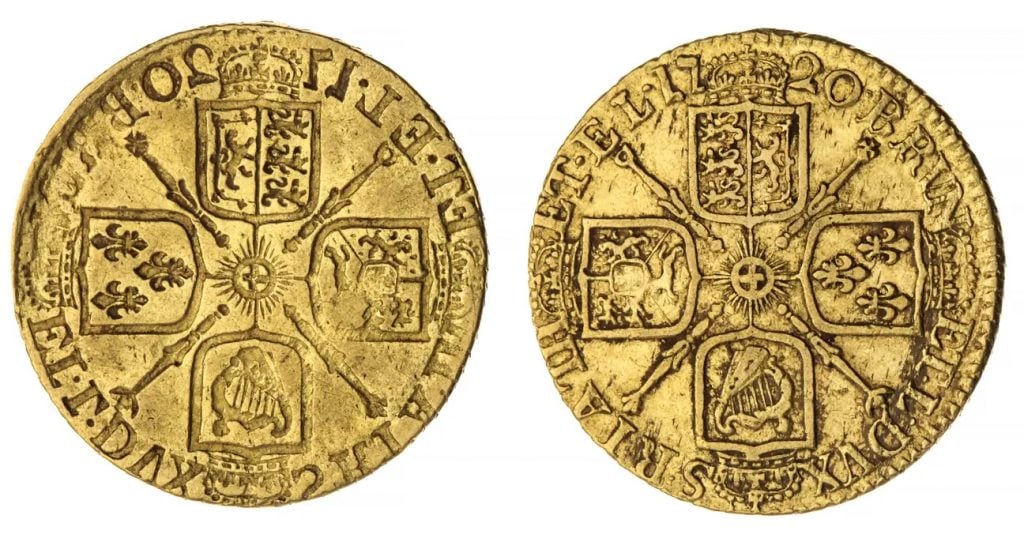
Thanks to a minting error, this 1720 George I guinea has two “tales” sides. It could be the most valuable of the coins discovered beneath a kitchen floor in the U.K. Photo courtesy of Spink and Sons, London.
The collection originally belonged to Joseph and Sarah Fernley-Maisters, a couple from an influential mercantile family, who married in 1694 and died in 1725 and 1745, respectively. The family made their money trading in iron ore, timber, and coal.
“Joseph and Sarah clearly distrusted the newly-formed Bank of England, the ‘banknote’ and even the gold coinage of their day because they [chose] to hold onto so many coins dating to the English Civil War and beforehand,” Edmund said. “Why they never recovered the coins when they were really easy to find just beneath original 18th-century floorboards is an even bigger mystery, but it is one hell of a piggy bank.”
See more photos of the coins below.
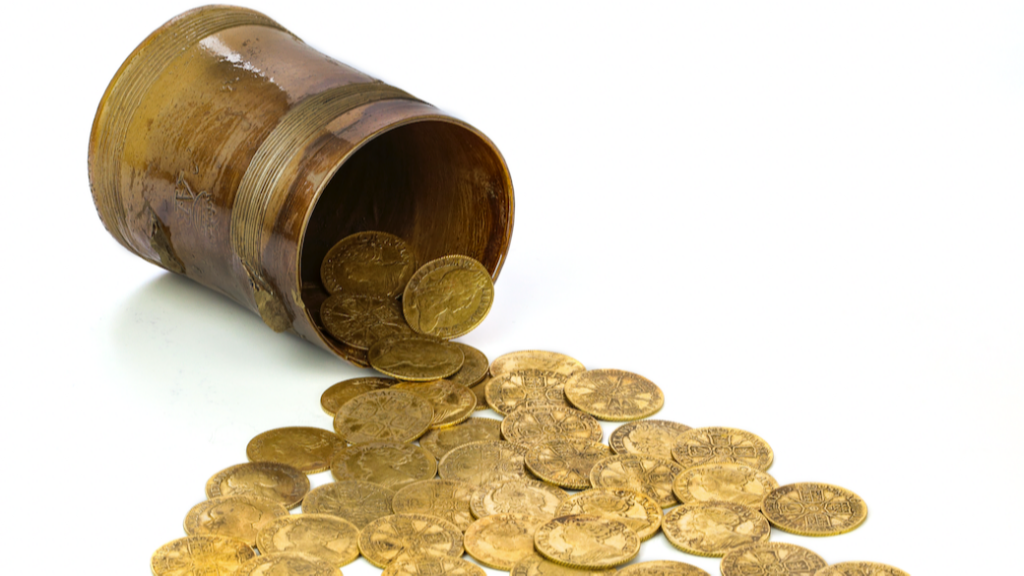
A British couple discovered this hoard of golden coins buried under their kitchen floor. Photo courtesy of Spink and Sons, London.
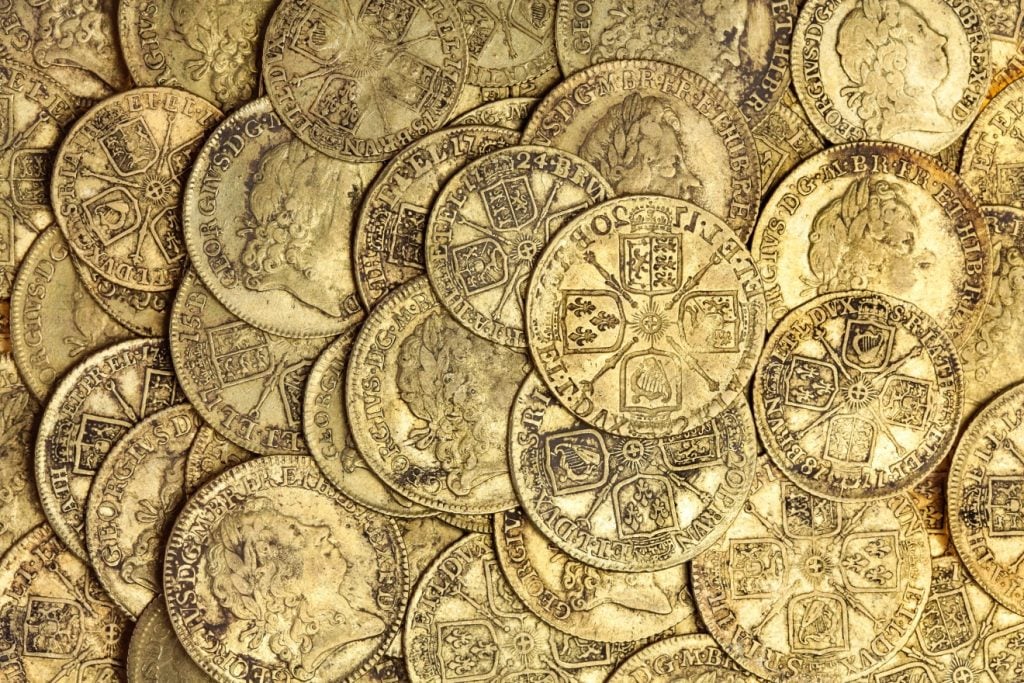
A British couple discovered this hoard of golden coins buried under their kitchen floor. Photo courtesy of Spink and Sons, London.
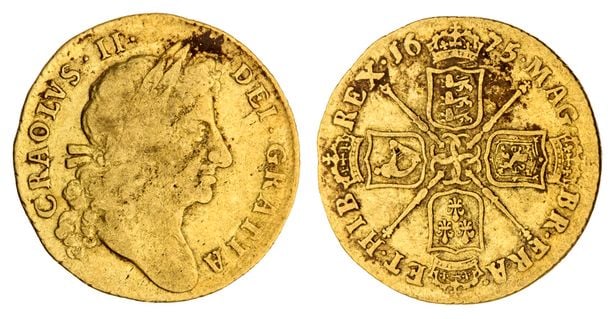
This rare Charles II guinea with spelling mistake is expected to fetch £1,500 ($1,725) at auction. It is one of the coins discovered beneath a kitchen floor in the U.K. Photo courtesy of Spink and Sons, London.
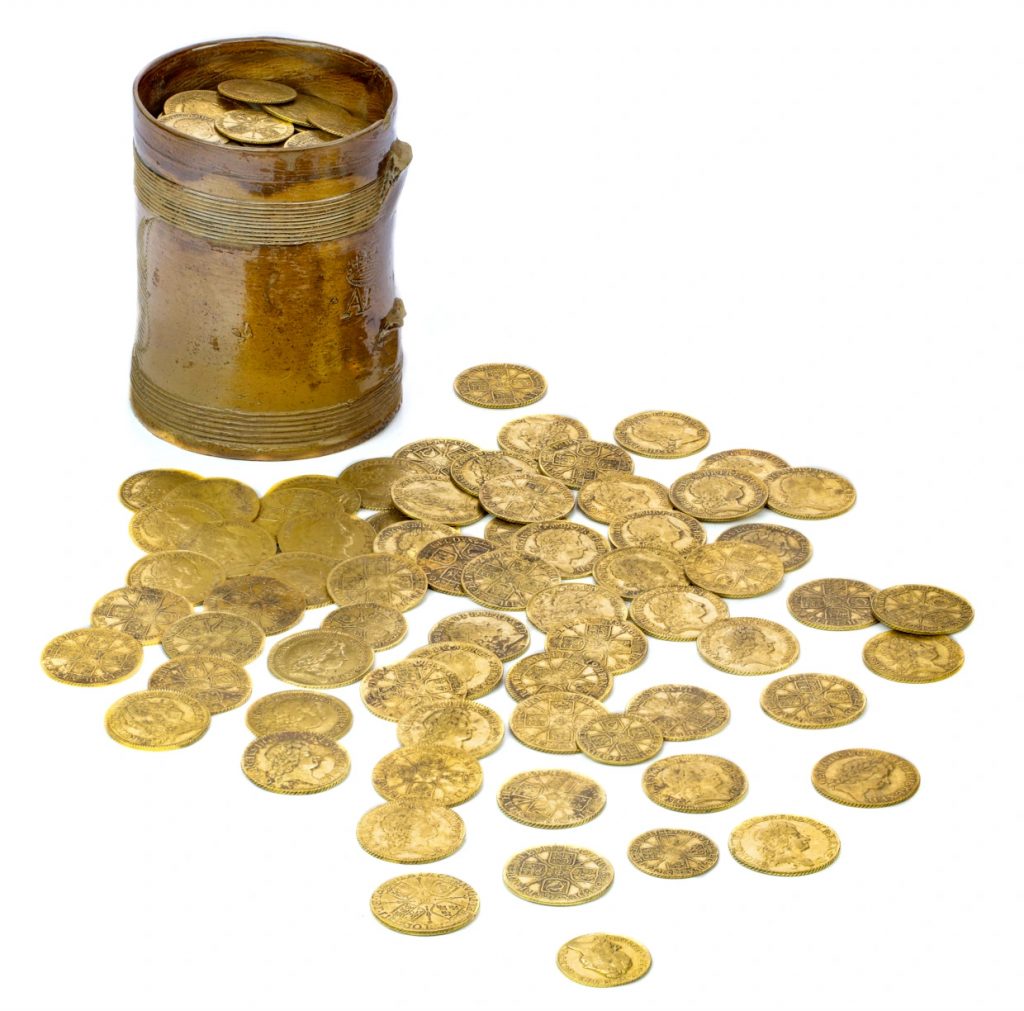
A British couple discovered this hoard of golden coins buried under their kitchen floor. Photo courtesy of Spink and Sons, London.
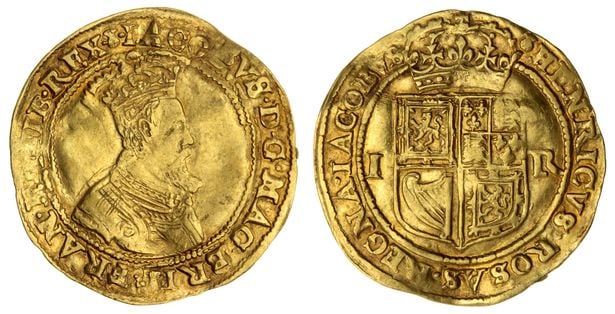
This James I Scotch double-crown is one of the coins discovered beneath a kitchen floor in the U.K. Photo courtesy of Spink and Sons, London.
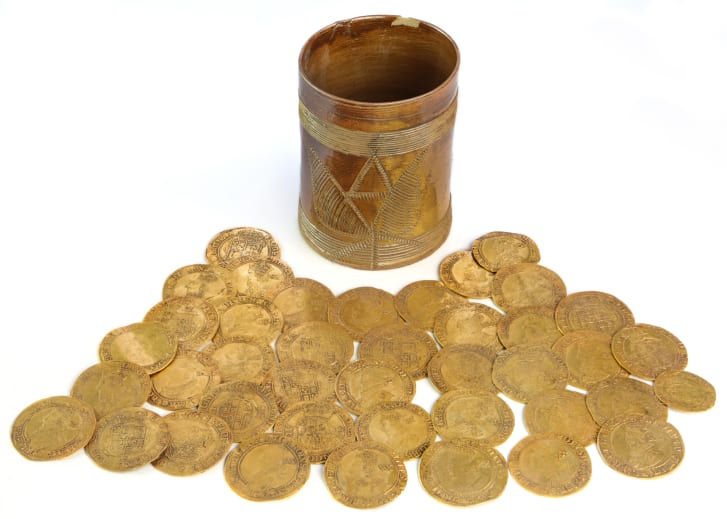
A British couple discovered this hoard of golden coins buried under their kitchen floor. Photo courtesy of Spink and Sons, London.

This “pattern bust” James I laurel is one of the coins discovered beneath a kitchen floor in the U.K. Photo courtesy of Spink and Sons, London.
Follow Artnet News on Facebook:
Want to stay ahead of the art world? Subscribe to our newsletter to get the breaking news, eye-opening interviews, and incisive critical takes that drive the conversation forward.
Credit: Source link